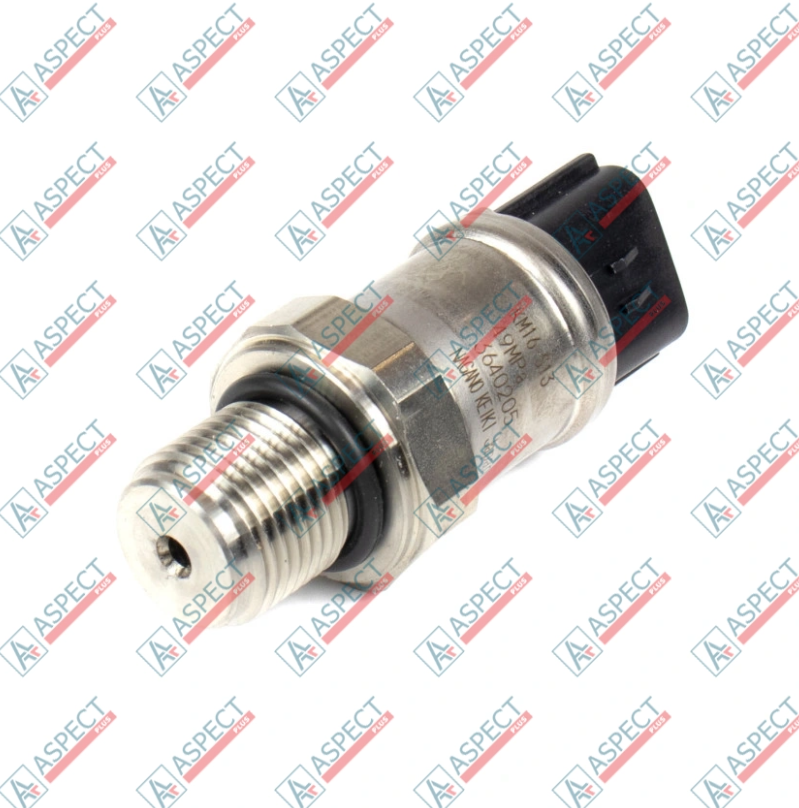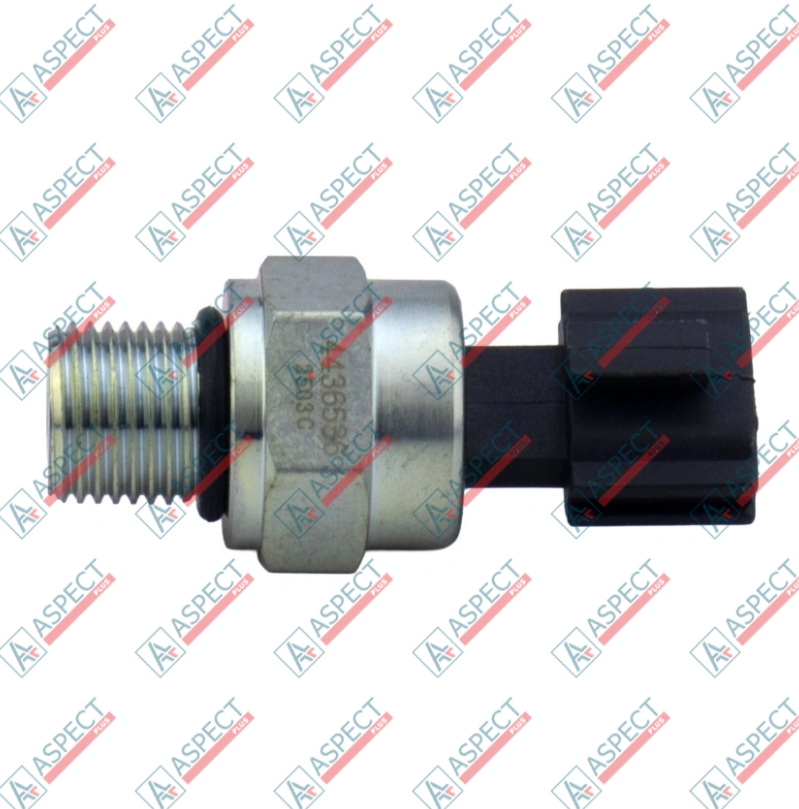Analysis of Fault Causes in Hitachi Hydraulic Pressure Sensors and Repair Methods

Modern Hitachi excavators are renowned for their hydraulic precision, speed, and fuel efficiency. This high level of performance is not achieved by mechanical components alone; it is orchestrated by a complex electronic control system. At the heart of this system are the hydraulic pressure sensors—small, highly sensitive devices that act as the "nerves" for the machine's brain (the ECU). A failing pressure sensor can provide false information, leading to a cascade of problems that are often misdiagnosed as major mechanical failures, such as a faulty pump or control valve. This article provides an expert analysis of the common fault causes for Hitachi hydraulic pressure sensors and outlines the correct diagnostic and repair methods to restore machine performance and reliability.
The Critical Role of Pressure Sensors in Hitachi Hydraulics
Hydraulic pressure sensors in a Hitachi excavator are vital for the machine's load-sensing and power-control functions. Their primary purpose is to continuously monitor the hydraulic pressure in key circuits (such as the main pump, pilot lines, and swing motor) and convert this physical pressure into an electrical signal (typically a 0.5-4.5V variable voltage) sent to the Engine-Pump Controller (ECU).
The ECU uses this real-time data to:
-
Regulate Pump Displacement: It signals the hydraulic pump to increase or decrease flow based on operator demand, maximizing fuel efficiency by ensuring the pump only delivers the power that is needed.
-
Control Engine RPM: It communicates with the engine controller to increase engine speed (load up) when high hydraulic power is required, and decrease it during idle times.
-
Prevent Overload: It monitors for dangerous pressure spikes that could damage hydraulic components, activating relief valves if necessary.
A failing sensor provides the ECU with "bad intelligence," causing the entire system to make incorrect decisions.
Common Fault Causes for Hitachi Pressure Sensors

While sensors are solid-state electronic devices, they live in one of the harshest environments on the machine—subjected to extreme vibration, temperature, and pressure. Failure is often caused by external factors rather than an internal defect.
-
Vibration and Fatigue: This is a primary cause of failure. The constant, high-frequency vibration of the excavator can, over thousands of hours, break the microscopic internal solder joints or delicate wires within the sensor, leading to an intermittent or completely dead signal.
-
Corrosion at the Connector: The sensor's electrical connector is its Achilles' heel. In the wet, muddy, and humid conditions of a construction site, moisture ingress is common. Water wicks into the connector pins, causing corrosion that creates high resistance or short circuits.
-
Harness Damage: The wiring harness leading to the sensor is often routed through tight spaces. Chafing against the machine frame or pinching from other components can break the wire internally or wear away insulation, leading to a short to ground or an open circuit.
-
Extreme Pressure Spikes (Hydraulic Shock): While sensors are built to handle high pressure, an extreme hydraulic shock—caused by an operator hitting a solid object or by a malfunctioning relief valve—can create a pressure spike that physically ruptures the sensor's internal diaphragm.
-
Contamination of the Orifice: Though less common for the sensor itself, fine metal particles or sludge in contaminated hydraulic fluid can sometimes clog the tiny orifice (snubber) leading to the sensor's diaphragm, resulting in a delayed or "stuck" pressure reading.
-
Thermal Stress: Constant, extreme heat cycles, often from an overheating hydraulic system, can degrade the sensor's internal electronics over time, causing it to "drift" or fail prematurely.
Symptoms and Diagnostics: Is it the Sensor or the System?
A key diagnostic challenge is that a faulty sensor often mimics a major mechanical failure.
Common Symptoms:
-
Low Power / Sluggish Operation: This is the most common symptom. If a sensor is "stuck" reading low pressure, the ECU will not signal the pump to increase its flow, making the excavator feel weak. The operator may believe the main pump has failed.
-
Engine Fails to "Load Up": When the operator pulls a lever, the engine RPM does not increase as it should. This is often because the faulty sensor is not telling the ECU that a hydraulic load is being applied.
-
Erratic or Jerky Movements: If the sensor's signal is intermittent or "noisy" (due to a loose wire or internal break), the ECU will receive fluctuating pressure data, causing the pump and valves to react erratically.
-
Diagnostic Trouble Codes (DTCs): The most reliable sign. The machine's monitor will display an error code related to the sensor (e.g., "Pressure Sensor Signal High," "Signal Low," or "Erratic Data").
Diagnostic Steps:
-
Check for DTCs: Always start by reading the fault codes on the monitor. This will usually point you directly to the specific sensor circuit that is failing.
-
Inspect the Connector: Before replacing the sensor, disconnect the wiring harness. Thoroughly inspect the pins on both the sensor and the harness side for corrosion (green or white powder), moisture, or bent pins. Clean the connector with a specialized electronic cleaner and re-test.
-
Test the Wiring Harness: A faulty sensor is useless if the signal can't reach the ECU. Use a multimeter to perform a continuity check on all wires (typically 3: 5V power, ground, and signal) from the sensor connector back to the ECU. Check for shorts to ground.
-
Test the Sensor Signal: This is the definitive test. With the connector plugged in, use a multimeter to "back-probe" the signal wire. With the machine on, the signal wire should read a base voltage (e.g., 0.5V). As you operate the hydraulic function associated with that sensor, the voltage should climb smoothly and proportionally (e.g., up to 4.5V). If the voltage is stuck, erratic, or zero, the sensor itself has failed.
Repair Methods and the Importance of Quality Parts
Hydraulic pressure sensors are sealed, non-serviceable electronic units. There is no "repair" for a failed sensor itself; the only repair method is replacement.
-
Relieve Hydraulic Pressure: Before removing any hydraulic component, always relieve the system pressure by following the correct procedure in the Hitachi service manual.
-
Replace the Sensor: Carefully remove the old sensor and install the new one. Ensure O-rings are correctly seated and torque the sensor to the manufacturer's specification.
-
Clear Fault Codes: After installation, clear the stored DTCs from the ECU and run the machine to verify that the fault does not return.
Why Quality Parts Matter:
It is tempting to save money on a cheap, unbranded sensor, but this is a critical error. The accuracy of this single component dictates the efficiency of the entire machine.
-
Accuracy and Response: A genuine Hitachi sensor (or a high-quality OEM equivalent) is calibrated to provide a precise, linear voltage response. A cheap sensor may "work" but provide inaccurate data (e.g., reading 10% lower than actual pressure), causing the ECU to constantly underperform, leading to poor fuel efficiency and sluggish operation.
-
Durability: Quality parts are built to withstand the intense vibration and heat of a Hitachi excavator. They use superior internal electronics and more robust connectors that resist corrosion and fatigue, ensuring a long service life.
Our company, Aspect Plus, offers a comprehensive range of genuine Hitachi spare parts and high-quality certified analogue sensors, ensuring your repair restores the machine's factory-level precision and reliability.
Conclusion
A hydraulic pressure sensor in a Hitachi excavator is a small but critical component that bridges the gap between mechanical power and electronic control. While failures are often caused by environmental factors like vibration and moisture, the symptoms can easily be mistaken for a catastrophic pump or valve failure. Correct diagnostics—starting with DTCs and moving to connector and wiring checks—is essential to isolate the fault. Because these sensors are non-repairable, replacement with a high-quality, genuine Hitachi part is the only reliable solution to restore the machine's performance, protect its hydraulic system, and ensure its long-term operational efficiency.
For expert diagnostics and a trusted source for genuine Hitachi hydraulic pressure sensors, contact the specialists at Aspect Plus.
- AI
- Vitamins
- Health
- Admin/office jobs
- News
- Art
- Causes
- Crafts
- Dance
- Drinks
- Film
- Fitness
- Food
- Jogos
- Gardening
- Health
- Início
- Literature
- Music
- Networking
- Outro
- Party
- Religion
- Shopping
- Sports
- Theater
- Wellness


